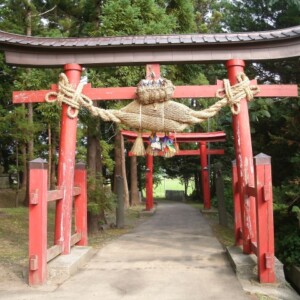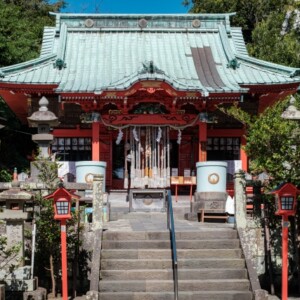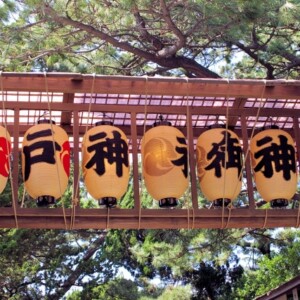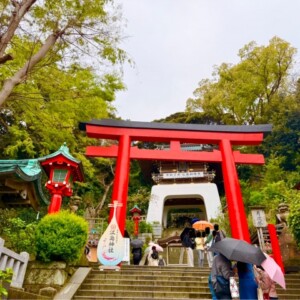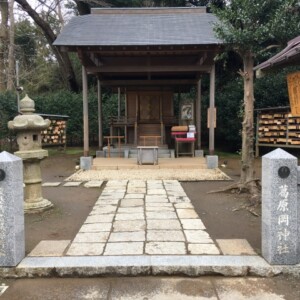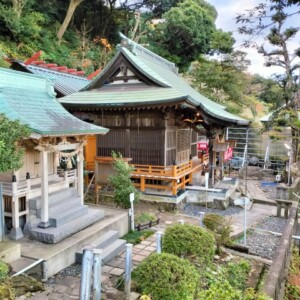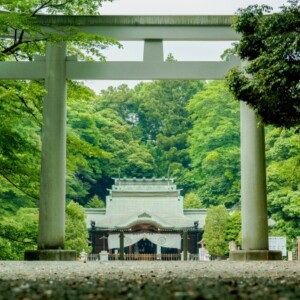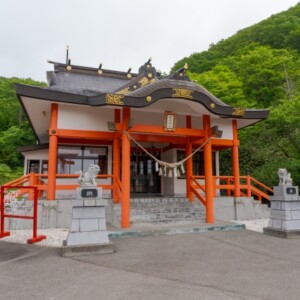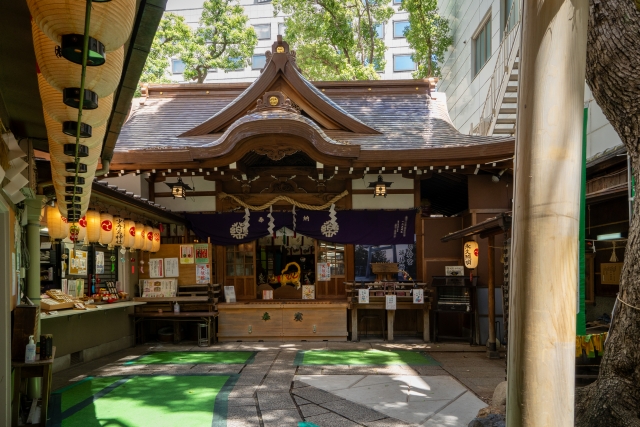
Shohikona Shrine|Complete guide to the history, highlights, and worship at Kanno-san, a well-known general guardian of Japanese medicine
Located in Doshomachi, Chuo-ku, Osaka City, Shohikona Shrine, nicknamed “Kanno-san,” is the general guardian of Japanese medicine. Located in a town of medicines since the Edo period, the shrine is believed by many people to be beneficial for healing illnesses and achieving good health. The shrine stands quietly in a modern townscape lined with buildings of pharmaceutical companies, creating a scene typical of Osaka where tradition and modernity coexist.
Outline and basic information about Shohikona Shrine
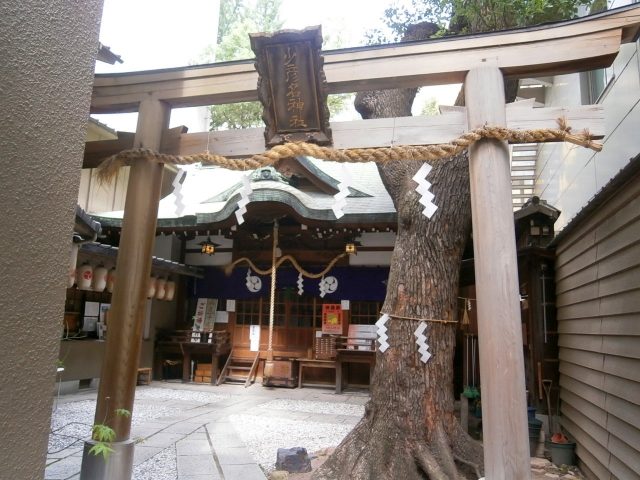
Shohikona Shrine is located in Doshomachi, Chuo-ku, Osaka City, a town where drug wholesalers have gathered since ancient times. The shrine enshrines Shohikonoko-no-mikoto, the ancestral god of Japanese medicine, and flame emperor Shinno, the ancestral god of Chinese medicine, as the main deities, and is widely worshipped as the general guardian of Japanese medicine. Even today, the shrine is well known as the center of the city of medicine, with offices of major pharmaceutical companies such as Takeda Pharmaceutical Company Limited, Mitsubishi Tanabe Pharma Corporation, and Shionogi Pharmaceuticals, Ltd.
History and Origin
Shohikona Shrine dates back to 1780. It was built in 1780 (An’ei 9), when a group of medicine buyers of the time invited a spirit of Shohikono-no-mikoto from Gojo Tenjinsha Shrine in Kyoto and enshrined it together with Kanno (a Shinto priest). Doshomachi had developed as a place where the drug trade flourished since the reign of Toyotomi Hideyoshi, and at a time when it was difficult to prepare and sort medicines, people engaged in the drug business built this shrine to seek the blessings of the gods.
The shrine is also known as the origin of the Ise-ko religion in the Edo period (1603-1868), and is still crowded with worshippers seeking money for Ise Jingu at New Year’s. The shrine narrowly escaped damage from the Osaka Air Raid in 1945, and in 1980, the worship and main shrines were restored and a new shrine office was built to commemorate the 200th anniversary of the shrine’s establishment.
Deities and Benefits
The two main deities of Shohikona Shrine are Sukuna-Hikona-no-Mikoto and Shin-no-Entei. Sukuna-Hikono-no-mikoto is said to have established the nation of Japan together with Okuninushi no Mikoto, and is known as a deity with a wide range of powers, including medicine, spells, hot springs, and sake brewing. On the other hand, Shinno-no-Imateru is a legendary emperor of ancient China and is regarded as the founder of agriculture and medicine.
These deities are believed to be responsible for the healing of illnesses, the attainment of good health, and the prosperity of business at Shohikona Shrine. The shrine is especially popular among companies and people involved in the pharmaceutical industry, and many people visit the shrine to pray for success in pharmaceutical and medical qualification exams. In recent years, an increasing number of people visit the temple to pray for the health and well-being of their pets.
Highlights and Features of Shohikona Shrine
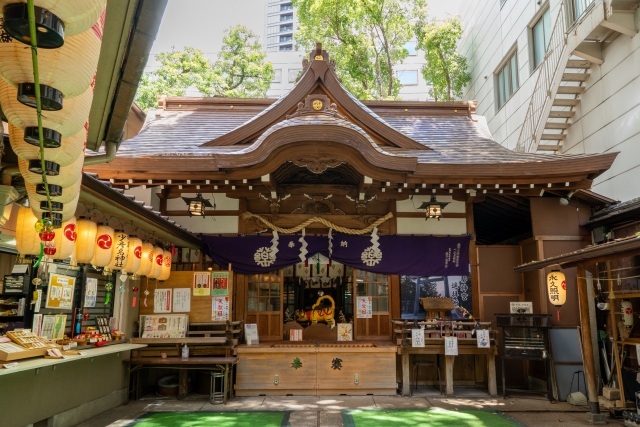
The most distinctive feature of Shohikona Shrine is that the traditional shrine architecture has been preserved despite its location in an urban area surrounded by modern office buildings. The shrine’s sanctuary, condensed into a limited site, gives visitors a sense of serenity and solemnity.
Architectural and Structural Attractiveness
The main hall of Shohikona Shrine was rebuilt in 1910 (Meiji 43) and is designated as a National Tangible Cultural Property. Built on a limited site in an urban area, the main hall is a compact yet prestigious structure that offers the beauty of traditional shrine architecture.
The worship hall is maintained as a place for visitors to pray and provides a quiet space for worship in a unique environment surrounded by pharmaceutical company buildings. The shrine office offers various types of amulets and red seals to meet the various wishes of worshippers.
A papier-mâché tiger and five-leaf bamboo
The most famous object at Shohikona Shrine is the papier-mâché tiger. In 1822, when cholera broke out in Osaka, a group of drug dealers in Doshomachi prepared a medicine called “Toratou Kakushi Oniou Huang En,” which was used as a remedy for the plague. The “papier-mâché tiger” was distributed at that time, and became widely known as a good-luck charm because of its efficacy.
Even today, “Kamitora,” a five-leaf bamboo with a papier-mâché tiger and a talisman attached to it, is given at the Jinno Festival. The five-leaf bamboo is a popular good-luck charm sought after by many worshippers, as it contains prayers for family safety and good health.
Cultural Properties and Important Collections
In 2007, the Yakuso Ko rituals, Kanno Matsuri and Fuyusi Matsuri, were designated as Osaka City Intangible Folk Cultural Properties (Folk Events). These festivals are recognized as valuable cultural assets that tell the history and traditions of Shohikona Shrine.
In addition, the area around the shrine has been developed as Doshomachi Museum Street, which houses the Doshomachi Museum of Drugs and other drug-related facilities. A visit in conjunction with these facilities will provide visitors with a deeper understanding of Japan’s pharmaceutical history.
Visiting Guide
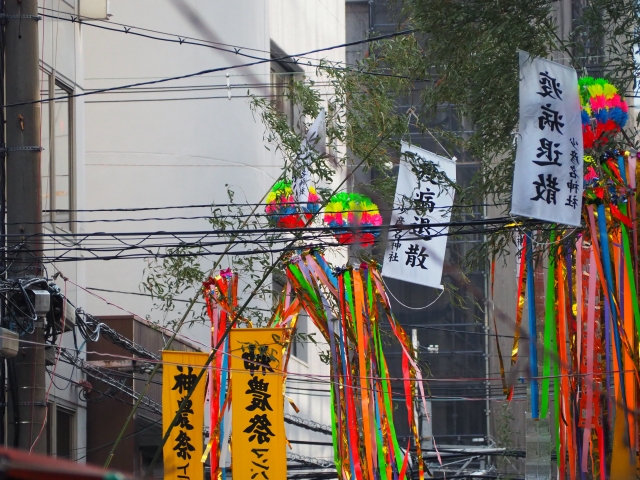
Shohikona Shrine is well known to many people as a god of medicine and is visited throughout the year by worshippers who wish to be healed of illness and achieve good health. Although the shrine is located in a limited space in an urban area, visitors can worship in a quiet and tranquil environment.
Worship Etiquette and Manners
The manner of worship at Shohikona Shrine is the same as at most Shinto shrines. First, bow before passing through the torii gate and proceed along the approach to the shrine. After purifying your hands and mouth at the hand- and mouth-watering basin, go to the hall of worship and worship with the manner of “Ni-sho, ni-sho, ni-sho, ni-sho, ni-sho, ni-sho, ni-sho.
Many visitors come to the shrine to pray for healing of illness and good health, so it is important to pray wholeheartedly. Many people in the pharmaceutical industry and those preparing for pharmaceutical and medical qualification exams also visit the shrine, so please keep the atmosphere quiet and solemn. An increasing number of people visit the shrine to pray for the health of their pets, and while it is possible to bring your pets to the shrine with you, please be considerate of other visitors.
Annual Events / Jinno Festival
The biggest event at Shohikona Shrine is the Kanno Matsuri held on November 22 and 23. Since Osaka’s festivals begin with the Toka Ebisu Festival at Imamiya Ebisu Shrine and end with the Jinno Festival at Shohikona Shrine, the Jinno Festival is known as the “Stop Festival” or “Festival of the Stops”.
During the Jinno Matsuri, “Kami-tora,” a papier-mâché tiger with a talisman attached to a five-leaf bamboo branch, is given to visitors, many of whom come to pray for family safety and good health. Many pharmacies and pharmaceutical companies in the Doshomachi area display festival lanterns and decorations of papier-mâché tigers, pharmaceutical company products, and blow torches hung from bamboos.
Other annual events include the Toumyo Festival held from August 13 to 16, and the Winter Solstice Festival held on the winter solstice. During the New Year’s holiday, the shrine is crowded with visitors for Hatsumode (New Year’s visit), especially those seeking money for Ise Jingu (Ise Shrine).
Good Luck Charms and Red Seal Information
Shohikona Shrine offers a variety of amulets for healing illnesses and achieving good health. The most famous are amulets with a motif of a papier-mâché tiger, such as the “Heal the Illness” amulet embroidered with a bean tiger, and the “Heal the Illness and Achieve Health” amulet made of a jade bloodstone crystal.
For those taking medical or pharmacy exams, there is also an academic achievement amulet, and wishes can be written on an ema (votive picture tablet). There are two types of ema: one with a picture of the shrine deity and the other with the shrine’s symbol, the sacred tiger ema.
Red seals are available at the shrine office, and many visitors ask for them as a souvenir of their visit. Both paper and wooden omuda are available. Wooden omuda are usually given for the home altar, while good luck charms are given for carrying around. The initial fee is 1,500 yen each.
Access and Visiting Information
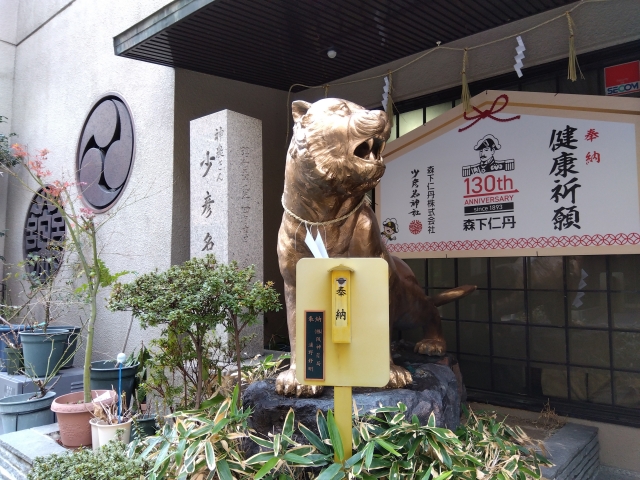
Shohikona Shrine is located in the heart of the city in Doshomachi, Chuo-ku, Osaka, making access by train very convenient. It is accessible from several train lines, making it easy to visit the shrine for sightseeing or during work.
Traffic Access
The nearest station to Shohikona Shrine is “Kitahama Station” on the Osaka Metro Sakaisuji Line, about a 5-minute walk from Exit 6. It is about a 6-minute walk from Kitahama Station on the Keihan Main Line, and about a 7-minute walk from Naniwabashi Station on the Keihan Nakanoshima Line. It also takes about 10 minutes on foot to reach us from “Yodoyabashi Station” on the Osaka Metro Midosuji Line.
The shrine is located in a small space between buildings, so it may be difficult for first-time visitors to find it. Entering the alley from the main street of Doshomachi with a sign reading “Kampo Yaku” (Chinese herbal medicine), you will see a golden bronze statue of a tiger and a sign reading “Jinno-san, Kusuri no Doshomachi Shiryokan (Kusuri no Doshomachi Archives)”. The sign with a picture of a papier-mâché tiger will be easy to spot.
<Address> 2-1-8 Doshomachi, Chuo-ku, Osaka 541-0045
Hours of worship, fees, and parking information
The hours of worship at Shohikona Shrine are from 6:00 am to 6:30 pm. The shrine office opens at 10:00 a.m., so we recommend that you visit after this time if you wish to obtain an omamori (charm) or red seal.
Worship is free of charge, and anyone is welcome to visit the shrine. If you wish to pray, please contact the shrine in advance. The shrine also offers Hatsumode for pets, which has become increasingly popular in recent years, by appointment only, so please check the shrine’s official website for details or contact the shrine directly.
Since the shrine is located in the center of the city, there is no dedicated parking lot. If you come by car, you will need to use coin-operated parking in the area. However, since the Doshomachi area is often used by pharmaceutical company personnel on weekdays and parking lots can become crowded, public transportation is strongly recommended.
Reference sites
・Shohikona Shrine (Kanno-san) official website: https://www.sinnosan.jp/



